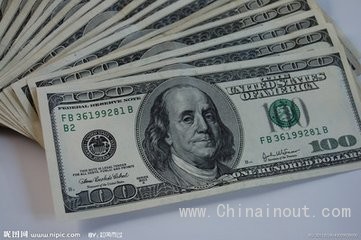重要的事情先说。我们不太可能重演上世纪30年代的局面。世界大型经济体没有刻意推行“以邻为壑”的贬值政策,保护主义也没有以丑陋的面目卷土重来。正如美国人常说的:情况正常,只是一切都乱了——或者诸如此类的话。
然而,我们不应忽视某些暗潮。美元正在飙升,出口增长正在放缓。同样的道理也适用于人们普遍预期、但并未真正发生的制造业重返美国。美国的大多数竞争对手正在削减利率,他们的货币兑美元汇率下跌。如果这些趋势持续(它们会持续的),美国政治将做出反应。美元上涨不像人们所以为的那样是件小事。
然而,美元上涨的步伐很难停下来。北美和其他多数大型经济体的增长差距是切实存在的——用美联储(Fed)主席珍妮特•耶伦(Janet Yellen)的话来说,北美的增长是“稳健的”。因此,它们之间的货币政策差距也在逐步扩大。美国十年期债券收益率处于仅仅1.7%的历史低位。但与德国、日本甚至英国的十年期债券(分别为0.3%、0.25%和1.3%)相比,这已经是很高的收益率了。投资者将会继续买入美元。
随着美联储迈向近十年来首次加息,这种差距将变得更加显著。其他大多数国家正在降息。在过去3周里,加拿大、印度和新加坡全都下调了本国的贷款利率。预计澳大利亚和土耳其将会效仿。欧洲央行(ECB)和丹麦的名义利率正在进入负值区间。欧元与美元等值可能只是时间问题。
这些不是“大萧条”(Great Depression)式的贬值。欧洲以及其他国家正在加快量化宽松步伐以提振经济增长,而不是为了要在贬值的道路上跑赢美国。但效果是一样的。
美元上涨有两方面的风险。首先,它对企业账面利润的影响越来越大。美国标普500指数成分股公司的近一半收入来自海外,净利润中的海外份额甚至更高。美元越强势,它们的利润增长越弱。
在2014年最后一个季度,许多大型公司发布的业绩报告显示利润下降。卡特彼勒(Caterpillar)的利润下降25%。宝洁(Proctor & Gamble)预计,由于强势美元的影响,2015年的利润将会出现零增长。甚至苹果(Apple)和谷歌(Google)也就“猛烈的汇率逆风”发出警告。这有助于解释今年1月美国股市在美元上涨的同时下跌5%。
其次,政治上的反弹越来越大。上周,共和党和民主党施压美国贸易代表迈克•弗罗曼(Mike Froman),要求他将汇率操纵条款写进《跨太平洋战略经济伙伴关系协定》(TPP)——日本是焦点。尽管中国没有参与TPP,但人民币是他们的真正目标。弗罗曼将他们的问题转给美国财政部长杰克•卢(Jack Lew),后者坚称强势美元符合美国的利益。
卢说的是套话,而且可以说具有误导性。但正如我的同事艾伦•贝蒂(Alan Beattie)所指出的,货币操纵取决于观点。一个人眼里的货币贬值,在另一个人眼里也许是货币政策。针对汇率操纵的规则不可能得到执行。坚持要求这些规则将破坏太平洋贸易协定取得成功的可能性。
然而,随着出口停滞和制造业就业岗位未能回流至美国,政治上的辩论可能越来越激烈。上月,美国前财长劳伦斯•萨默斯(Lawrence Summers)和英国影子财政大臣埃德•鲍尔斯(Ed Balls)在美国进步中心(Center for American Progress)出炉了一份关于包容性繁荣的报告。该报告列举了一套明确的政策来扭转西方中产阶级收入下降的趋势,包括扩大员工所有制,改进带薪产假制度,提高最低工资水平以及加强职业培训。这些提议被视为希拉里•克林顿(Hillary Clinton)竞选总统的政策蓝图。该报告还提议“新的贸易协定应该明确包括可执行的针对汇率操纵的纪律”,这令人震惊,因为萨默斯一贯反对此类条款。有了此类依据,无怪乎左、右翼都呼吁纳入遏止汇率操纵的条款。
那么,强势美元的结局将会如何?好的一面是,耶伦可以在比预期更长的时间里保持零利率。目前薪资和通胀几乎没有上涨迹象。美元越强势,进口成本越低。油价不断下跌也有所帮助。
按欧洲的标准,美国正在设法应对一个高级问题。坏消息是,美国的复苏建立在消费增长的老套模式的基础之上。在2014年最后一个季度,2.6%的增长是家庭支出(而非投资)推动的。美国企业实际上在削减国内支出。
既然美国消费支出增长是廉价借贷成本(而非中产阶级收入增长)推动的,当利率周期变化时,这种增长就会难以为继。大多数美国人仍在怀疑复苏的力度。鉴于人们以不到3%的利率就可获得30年期的抵押贷款,买房子的人这么少令人意外。很难相信,当耶伦最终采取加息行动的时候,会有更多的人买房子。
从某个方面来说,卢是正确的。强势美元反映出美国的成功。它也可能说明了,要当心你自己的愿望。(
中国进出口网)
First things first. We are not about to replay the 1930s. The world’s big economies are not deliberately indulging in “beggar thy neighbour” devaluations and protectionism is not poised for an ugly revival. As they say in the US: situation normal, all fouled up — or words to that effect.
Yet there are undertows we ignore at our risk. The US dollar is surging and export growth is slowing. The same applies to the widely forecast stampede of reshoring to the country, which is not really happening. Most US competitors are cutting interest rates and watching their currencies fall against the dollar. If these trends persist, and they will, US politics will react. A rising dollar is not the picnic it is made it out to be.

Yet it is hard to see what will stop it. The gap between North America’s growth, which is “solid”, in the words of Janet Yellen, US Fed chairman, and that of most other big economies is real. So, too, is the growing monetary divergence. US 10-year bond yields are historically low at just 1.7 per cent. But these are juicy compared to Germany (0.3 per cent), Japan (0.25 per cent) and even the UK (1.3 per cent). Investors will keep buying the dollar.
This will become more pronounced as the Fed moves towards its first rate rise in almost a decade. Most others are cutting theirs. In the past three weeks, Canada, India, and Singapore have all reduced their lending rates. Australia and Turkey are expected to follow suit. The European Central Bank and Denmark are moving into negative nominal territory. It is probably a matter of time before the euro reaches parity with the dollar.
These are not Great Depression-style devaluations. The Europeans and others are stepping up quantitative easing to revive growth, not to undercut the US. But the effect is the same.
The dangers are two-fold. First, there is an increasingly strong effect on the corporate bottom line. Almost half of the revenues of US S&P 500 companies come from overseas, and an even higher share of net profits. The stronger the dollar, the weaker their earnings growth.
In the last quarter of 2014, many big companies reported declining profits. Caterpillar’s fell by 25 per cent. Proctor & Gamble forecasts zero growth in 2015 because of the strong dollar. Even Apple and Google warned of “strong currency headwinds”. This helps explain why US equity markets dropped by 5 per cent in January, while the dollar rose.
Second, the political backlash is growing. Last week, Republicans and Democrats pressed Mike Froman, the US chief trade negotiator, to include a currency manipulation clause in the Transpacific Partnership trade deal — with Japan the focus. Though China is not part of the TPP, the remininbi was their real target. Mr Froman re-directed their questions to Jack Lew, the Treasury secretary, who insists a strong dollar is in America’s interests.
Mr Lew’s mantra is formulaic, and arguably misleading. But as my colleague Alan Beattie has pointed out, currency shenanigans are in the eye of the beholder. One person’s devaluation is another’s monetary policy. Rules against it are impossible to enforce. Insisting on them would wreck chances of a Pacific trade deal.
Yet, as exports stall and manufacturing jobs fail to return to the US, the political debate is likely to grow louder. Last month, Lawrence Summers, the former US Treasury secretary, and Ed Balls, the UK shadow chancellor, came out with a report on inclusive prosperity at the Center for American Progress. It offers a clear set of policies to reverse the declining incomes of the western middle class. These include broadening employee ownership, improving parental leave, raising the minimum wage and stepping up vocational training. Its findings are seen as a blueprint for Hillary Clinton’s presidential campaign. Astonishingly, given that Mr Summers has long opposed such clauses, it also recommends “new trade agreements should explicitly include enforceable disciplines against currency manipulation”. With such cover, it is little wonder both left and right are clamouring for their inclusion.
What, then, will become of the strong dollar? The upside is that Ms Yellen can afford to keep interest rates at zero for longer than expected. There is scant sign of wage growth and inflation is nowher on the horizon. The stronger the dollar, the lower the cost of imports. Falling oil prices also help.
By Europe’s standards, the US is grappling with a high-class problem. The bad news is that its recovery is based on the familiar model of rising consumption. In the last quarter of 2014, growth of 2.6 per cent was driven by household spending, rather than investment. American companies are actually cutting domestic outlays.
Since rising US consumer spending is driven by cheap borrowing costs rather than growing middle class earnings, it is vulnerable to a turn in the interest rate cycle. Most Americans are still cautious about the strength of the recovery. With 30-year mortgages available at less than 3 per cent, it is striking how few are buying homes. It is hard to believe more will do so when Ms Yellen finally acts.
In one respect, Mr Lew is right. The strong dollar reflects America’s success. It may also be a case of being careful what you wish for.












